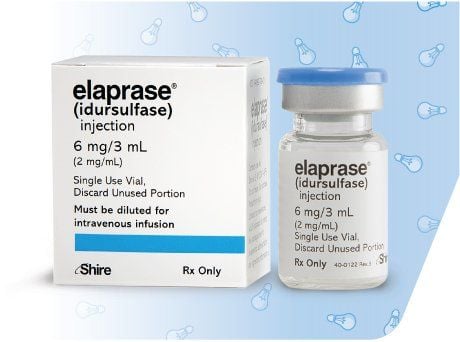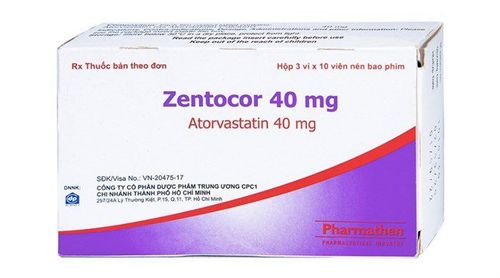This is an automatically translated article.
Article by Doctor Trinh Ngoc Anh - Department of General Internal Medicine - Vinmec Times City International General HospitalCardiovascular syndrome (CMS), also known as metabolic syndrome, syndrome X is a collection of metabolic disorders including insulin resistance, prediabetes, dyslipidemia, hypertension and abdominal obesity. This is a disease that has been recognized by the World Health Organization (WHO) and the American Society of Endocrinology (ASE).
1. Consequences of metabolic cardiovascular syndrome
In today's world, the development of technology, the increase of fast food consumption and a sedentary lifestyle make non-communicable diseases to reign and become a threat in the future worldwide. gender. The metabolic cardiovascular syndrome is one of the leading diseases in this group.
According to an epidemiological survey from 2017, about 25% of adults in the world are suffering from metabolic cardiovascular syndrome, the mortality rate from cardiovascular disease has decreased in developed countries but increased in developing countries. developing or underdeveloped countries. Health-economic analyzes in the United States show that the average annual medical expenditure in patients with 1 factor in the metabolic cardiovascular syndrome is $5,564 but can be as high as $12,287 if all four factors are present. element. Another study in the US showed that patients with metabolic cardiovascular syndrome had an increased risk of unemployment by 40-45%, the number of days off increased by 179%, and the cost of lost work due to reduced labor productivity was up to 19%. $18.7 billion/year more than the average person.
This syndrome is very common in people >65 years old, this age group will increase from 12% in 2000 to 20% in 2050. Besides, most components in metabolic cardiovascular syndrome ( diabetes , dyslipidemia , obesity ...) all tend to increase in the future. Patients with metabolic cardiovascular syndrome will double the risk of coronary heart disease and triple the risk of stroke compared with the general population, significantly shortening the patient's life expectancy.

Béo phì làm gia tăng nguy cơ mắc hội chứng tim mạch chuyển hóa ở người bệnh
2. Why does the patient have metabolic cardiovascular syndrome?
In this syndrome, abdominal obesity is considered to be the core lesion that promotes an increased risk of cardiovascular disease. Pathophysiologically, abdominal obesity is associated with an increase in visceral fat due to an imbalance between energy intake and energy expenditure. Visceral fat is a highly metabolic tissue that produces numerous intercellular mediators that cause proinflammatory and prothrombotic states. In fact, studies have shown that waist circumference is a much more sensitive indicator than BMI in predicting cardiovascular disease risk. In this syndrome, insulin resistance and decreased adiponectin levels are also important disorders that contribute to the promotion of inflammation and atherosclerosis.3. How does metabolic cardiovascular syndrome manifest?
The risk of metabolic syndrome is increased in overweight/obese patients, smoking, high carbohydrate diet, sedentary lifestyle, postmenopausal women, family history of a parent with diabetes metabolic cardiovascular disease.
Clinically, patients usually have no special symptoms except for changes in waist circumference. The disease usually progresses silently for many years, although the inflammatory and atherosclerotic lesions progress slowly. Patients with this syndrome are often discovered by chance during a general physical examination. But the majority of patients do not go to the doctor regularly, when the disease is detected late, there are often complications of target organ damage such as coronary artery disease, stroke or peripheral artery disease. It can be seen that the faint symptoms combined with the severe consequences make this syndrome considered a "silent killer" in the modern world. Therefore, early detection is the key to dealing with this syndrome.

Hội chứng tim mạch chuyển hóa có thể gây đột quỵ não ở người bệnh
4. How is metabolic cardiovascular syndrome treated?
For patients with metabolic cardiovascular syndrome, treatment will focus on controlling multiple cardiovascular risk factors. Because the core pathogenesis is increased visceral fat, lifestyle changes, healthy diets, regular exercise, weight loss to reach the ideal weight, and smoking cessation are considered the first measures for this group of patients. this multiplier. After that, the doctors will analyze the factors constituting the metabolic cardiovascular syndrome to have a specific treatment plan such as: control blood sugar, blood fat, blood pressure, weight... Treatment costs will be higher, if the patient is detected later and has more factors. Current worldwide trends in the management of this syndrome focus on early detection in the pre-disease stage and multidisciplinary management when the disease has progressed.
5. What is special about screening and management of metabolic cardiovascular disease at Vinmec?
Around the world, major cardiology institutes/centers always have a unit dedicated to metabolic cardiomyopathy. According to that model, Vinmec International General Hospital is the first hospital in Vietnam to apply the metabolic cardiovascular syndrome screening model according to the 4P philosophy (proactive, predictive, preventive, individualized). and management of patients with metabolic cardiovascular syndrome according to the service line (service line) with the participation of many specialists such as endocrinology - diabetes, cardiology, nephrology, nutritionist, fitness specialist. force, care management...

Định kỳ kiểm tra sức khoẻ giúp người bệnh sớm phát hiện bệnh lý và kịp thời điều trị
With such a model, patients will be consulted for screening and control right from the pre-disease stage, applying individualized intervention models for each individual. As for those who already have complications, the patient will be diagnosed, classified according to the protocol, sent to the necessary specialties from which to be treated comprehensively. Therefore, cardio-metabolic patients who come to Vinmec hospital will receive more effective disease management, treatment and care, and the ultimate goal is to improve the quality of life as well as prevent complications for patients. patient.













